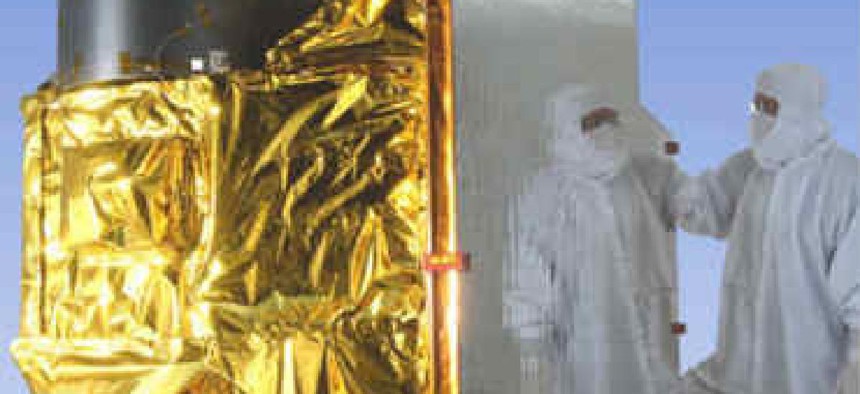Primary instrument ready for GOES-R installation

The Advanced Baseline Imager is the new NOAA satellite's primary instrument for scanning the planet’s weather, oceans and environment.

The Advanced Baseline Imager is one of six primary, state-of-the-art instruments developed for the National Oceanic and Atmospheric Administration’s next-generation geostationary satellites.
One of six primary, state-of-the-art instruments developed for the National Oceanic and Atmospheric Administration’s next-generation geostationary satellites has been cleared for installation.
The Advanced Baseline Imager (ABI), developed by Exelis, will be shipped from Indiana to Lockheed Martin Space Systems in Colorado to be installed on the first Geostationary Operational Environmental Satellite (GOES-R), which is expected to launch in early 2016.
ABI is GOES-R’s primary instrument for scanning the planet’s weather, oceans and environment, offering faster imaging at higher resolutions than current space-based technology. The instrument also offers NOAA new forecast products for severe weather, volcanic ash advisories, fire, smoke monitoring and other types of hazards.
“The United States is home to some of the most severe weather in the world, including tornadoes, hurricanes, snowstorms, floods and wildfires,” said Mary Kicza, assistant administrator for NOAA’s Satellite and Information Service. “The ABI offers breakthrough technology that will help NOAA develop faster and more accurate forecasts that will save lives and protect communities.”
Despite a series of delays, the latest of which pushed the launch date from October 2015 to sometime in the first quarter of 2016, instrumentation development is on target for GOES-R. The spacecraft’s first instrument, the Extreme X-Ray Irradiance Sensor (EXIS), was completed in May 2013. It will provide scientists on the ground advanced warning of solar storms.
The remaining planned GOES-R instruments are:
- Geostationary Lightning Mapper, which will provide for the first time a continuous surveillance of total lightning over the western hemisphere from space.
- The Space Environment In-Situ Suite, which consists of sensors that will monitor radiation hazards that can affect satellites and communications for commercial airline flights over the poles.
- The Solar Ultraviolet Imager, a high-powered telescope that observes the sun, monitoring for solar flares and other solar activity that could affect Earth.
- The Magnetometer, which will provide measurements of the space environment magnetic field that controls charged particle dynamics in the outer region of the magnetosphere. These particles can be dangerous to spacecraft and human spaceflight.
NEXT STORY: GSA consolidates data centers, IT ops






